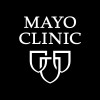
Therapeutic Hypothermia After Cardiac Arrest in Non Shockable Rhythm
Cardiac ArrestCardiac arrest is at present a major cause of mortality as well as a cause of disability for the surviving victims.In Europe, every year counts as 300,000 cardiac arrests responsible for 250,000 deaths. Thus, less than 20 % of patients discharged home with impaired quality of life associated with symptoms of tiredness, stress, anxiety. The prognosis is related to the initial cardiac rhythm present during the initiation of resuscitation. Recent progress in the improvement of mortality and neurological outcome has been achieved over the last decade thanks to the systematic implementation of a period of targeted temperature control between 32 and 34 ° C in patients who benefited from the realization of at least one electrical external shock. There are theoretical and clinical arguments to think that achieving the same way a period of targeted temperature control between 32 and 34 ° C in patients treated for cardiac arrest with a non- shockable rhythm on arrival can also benefit from this procedure. However other arguments are against this hypothesis including an increase in the risk of infection , worsening of the patient's hemodynamic status with no benefit to him. To answer this question, we conduce a randomized multicenter study testing the potential improvement of neurological outcome through this procedure targeted temperature control between 32.5 and 33.5 ° C in these patients.

Comparing Therapeutic Hypothermia Using External and Internal Cooling for Post-Cardiac Arrest Patients...
Cardiac ArrestControlled therapeutic hypothermia is a method of preserving neurological function post-resuscitation.It has been associated with improved functional recovery and reduced histological deficits in animal models of cardiac arrest.

Mild Hypothermia in Cardiogenic Shock Complicating Myocardial Infarction
Acute; Myocardial InfarctionComplications1 moreProspective, randomized, single-center, controlled, open-label Pilot-study to investigate whether induction of mild hypothermia in addition to primary percutaneous coronary intervention and optimal medical therapy in myocardial infarction complicated by cardiogenic shock improves cardiac power index after 24 h.

Preoperative Patient Warming for Prevention of Perioperative Hypothermia in Major Abdominal Surgery...
Preoperative WarmingPrewarming4 moreThe study should evaluate how long patients undergoing major abdominal surgery under combined general/epidural anaesthesia have to be actively warmed preoperatively to prevent perioperative hypothermia and postoperative shivering. 99 patients will receive forced-air skin-surface warming for different duration. Body temperature will be measured at the tympanic membrane. The investigators hypothesize that active warming before starting the epidural anaesthesia will decrease the incidence of perioperative hypothermia.

Warmed Humidified Carbon Dioxide (CO2) for Open Surgery
HypothermiaEighty adult patients undergoing open colon surgery will be randomized to either: standard warming measures including heating sheets, warming of fluids, and insulation of limbs and head, or to additional insufflation of humidified carbon dioxide (approx. 36-37ºC, approx. 80-100% relative humidity) via a humidifier with a heated tube (Fisher&Paykel) connected to a gas diffuser (Cardia Innovation AB) that is able to create a local atmosphere of 100% carbon dioxide (humidified ) in the open wound cavity. PRIMARY AIM The primary aim of this study is to evaluate if humidified carbon dioxide insufflated into an open surgical wound can be used to warm the core, the open wound cavity, and the wound edges during major abdominal surgery. SECONDARY AIMS Secondary aims are to evaluate possible differences between the groups regarding complications and clinical differences including histological signs of desiccation injury of peritoneal samples, time to extubation, core temperature after surgery, ICU stay, bleeding volume, hospital stay, postoperative pain, infections, shivering, postoperative signs of restored bowel function including bowel movements, flatus, and first meal.

A Pilot Study of Renal Hypothermia During Partial Nephrectomy
Kidney NeoplasmRenal hypothermia may preserve renal function in patients who require partial nephrectomy. In preparation for a definitive randomized controlled trial this pilot study will assess feasibility and variance data to be used for sample size estimation

Fluid Shifts in Patients Treated With Therapeutic Hypothermia After Cardiac Arrest
Cardiac ArrestTherapeutic hypothermia after cardiac arrest har shown to improve the rate of survival in a significant way. However hypothermia also causes leak of fluid into the surrounding tissue. This edema could lead to damage to the same tissue, not beneficial for the patients. We therefore try to evaluate if hyperosmolar, hyperoncotic fluid as an alternative to std. treatment (NaCl/RA)could affect the edema in a positive way, and result to a better outcome neurological for the patients.

Hypothermia During Intracranial Aneurysm Surgery Trial
AneurysmHypothermia1 moreThis is a large multi-center, prospective, randomized trial designed to determine whether mild intraoperative hypothermia results in improved neurological outcome in patients with an acute subarachnoid hemorrhage (SAH) who are undergoing an open craniotomy to clip their aneurysms.

Targeted Hypothermia Versus Targeted Normothermia After Out-of-hospital Cardiac Arrest
Out-of-hospital Cardiac ArrestILCOR guidelines recommend Target Temperature Management (TTM) to between 32°C and 36°C after out-of-hospital cardiac arrest, based on low quality evidence. In a previous trial, TTM at 33°C did not confer a survival benefit or improved neurological function, compared to TTM at 36°C. A lower target temperature might be beneficial compared with normothermia and early treatment of fever. Therefore the primary purpose of the TTM2-trial will be to study any differences in mortality, neurological function and quality of life between a target temperature of 33°C and standard care avoiding fever.

Intravenous Thrombolysis Plus Hypothermia for Acute Treatment of Ischemic Stroke
StrokeThe purpose of this trial is to evaluate if it is safe to use tissue plasminogen activator (tPA) within 6 hours of stroke onset when combined with hypothermia.
